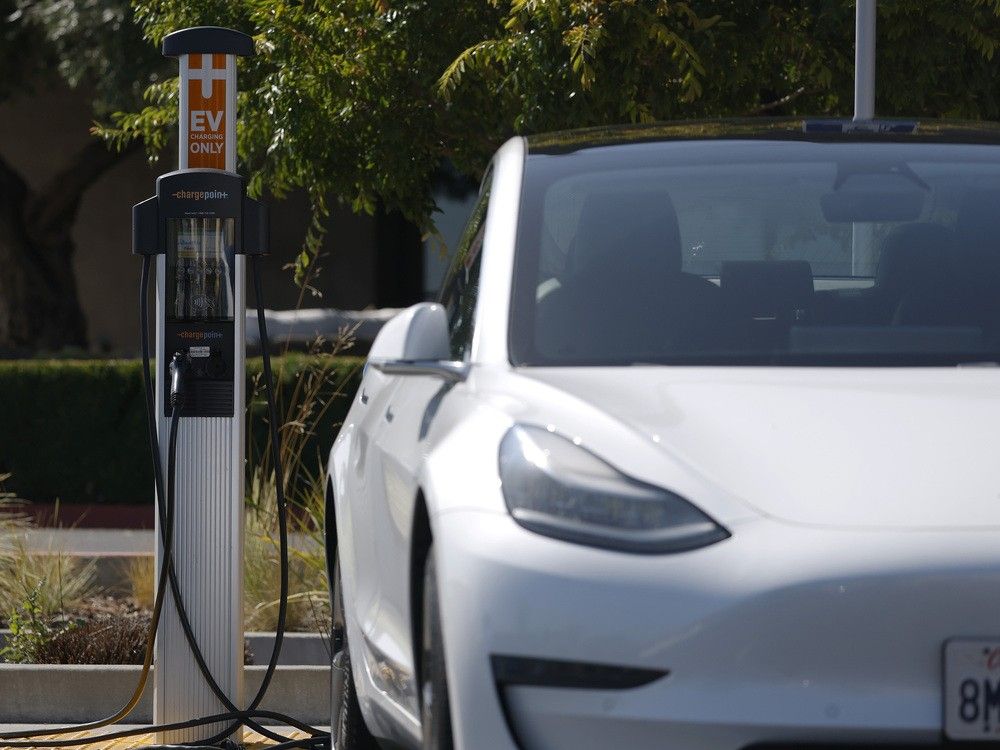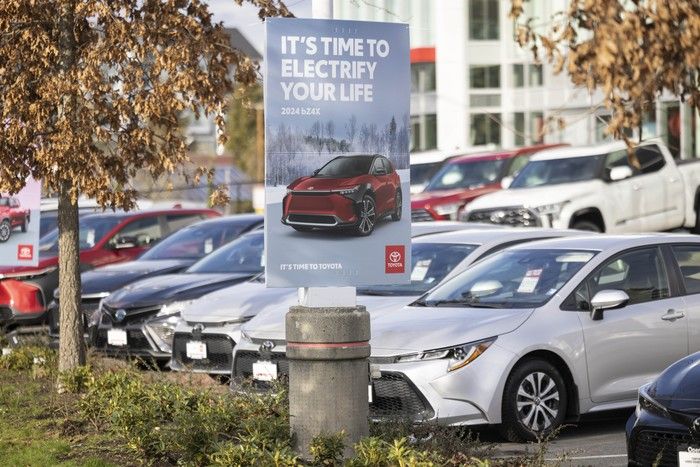
The B.C. government is considering scaling back its zero-emission vehicle sales targets amid a decline in EV sales and ongoing consumer concerns about affordability and gaps in charging infrastructure.
In a slide presentation to industry representatives on June 18, Nat Gosman, an assistant deputy minister in the Energy Ministry, said that a recent levelling off in adoption of electric vehicles by British Columbians had made it “challenging” for the province to meet its legislated target that 90 per cent of new vehicles be zero-emission by 2030.
Although the province remains a leader within Canada, with electric vehicles accounting for 22.4 per cent of new vehicles sold, that rate remained largely static in both 2023 and 2024, he said. Gosman cited a number of reasons for the slowdown, including affordability concerns due to a pause in government rebates, supply chain disruptions caused by U.S. tariffs, and concerns about reliability of public charging sites.
As a result, the province is “considering several changes” to the zero-emissions vehicle act “to respond to current economic conditions, support affordability for consumers, and lessen pressures on automakers,” according to the slide presentation, which was obtained by the Energy Futures Institute and shared with reporters on Tuesday.
Barry Penner, chair of the Energy Futures Institute and a former B.C. Liberal environment minister, said the problem is that the government has “put the cart before the horse” when it comes to incentivizing people to buy electric vehicles.
He said public charging infrastructure remains unavailable or unreliable in large swaths of the province and costs have not come down enough for many British Columbians to afford making the switch amid a cost-of-living crisis.
“The government imposed these electric vehicle mandates before the public charging infrastructure is in place and before we’ve figured out how we’re going to make it easy for people to charge their vehicles in multi-family dwellings like apartment buildings,” said Penner.
Data from the Ministry of Energy’s presentation shows there have been 7,000 public charging stations installed across the province, with a goal to get that to 10,000 by 2030.
Despite that progress, officials admitted that only one in four British Columbians have access to a charging station and that 41 per cent of respondents to a research survey carried out by the ministry said there were not enough public charging stations.
Another problem, says Penner, is that the NDP’s elimination in May of its electric vehicle mandate program will further depress demand.
He also raised concerns about the availability of enough electricity to charge EVs given B.C. imported a quarter of its electricity from the U.S. in 2024 and could be on course to do the same this year.
“We’re a net importer of electricity, but we have these policies in British Columbia to prohibit the use of natural gas for commercial and residential heating or to use internal combustion engine vehicles,” said Penner.
“It would make sense to stop preventing people from accessing other forms of energy before we have a ready supply of electricity that we don’t have to import from the United States.”

Energy Minister Adrian Dix declined an interview request but in a statement the Ministry of Energy chalked the declining sales of EVs up to the ongoing trade war with the U.S., the unpopularity of Tesla CEO Elon Musk and the removal of both the carbon tax and federal EV rebate.
The ministry did not respond to a question from Postmedia about what a revised EV mandate might look like.
Blair Qualey, CEO of the New Car Dealers Association of B.C., said he was briefed by the Ministry of Energy last Friday and says the problem the government is running into is a lack of incentives to boost supply.
Instead, it has become focused on driving up the supply of electric vehicles through the zero-emission mandates, which doesn’t work in a time of low demand.
“There’s a number of unintended consequences that come with sticking with these incredibly stringent targets that the government put in place a couple years ago,” said Qualey.
“I think government, based on general comments, recognizes reality and they appear to be open to having conversations about potential ways of adapting the current targets.”
Qualey agreed with Penner that the three main issues appear to be a lack of charging infrastructure, affordability challenges, and a potential concern around whether B.C. actually has enough electricity to power people’s vehicles.
He recommended the government focus on what he calls the “three-legged stool” of ensuring there are enough charging stations, helping with affordability by bringing back the rebate program, and launching an educational campaign around the improving range and technology available in electric vehicles.
Jonn Axsen, a resource and environmental management professor at SFU, said he doesn’t mind if the government feels it needs to ease off on the 2030 target so long as the 2035 target that 100 per cent of all new vehicles be zero-emission remains in place.
He said the federal government’s target for 2030 is only set at 60 per cent, and he believes this might be an easier benchmark for the province to follow.
“Having a target of 100 per cent by 2030 is absolutely possible. We can do 90 per cent by 2030. We could have that as a requirement. It’s more just about what is the smoother transition,” said Axsen.
At the same time, Axsen says the story of the auto sector decrying government mandates around efficiency and transitioning away from fossil fuels goes back decades.
He also believes the idea that people will simply take up electric vehicles without government support is false.
“It’s a tactic used by automakers since forever. When it comes to environmental regulation, they don’t want to be environmentally regulated, of course. So anytime there’s any hiccup in sales, they just always point out, ‘Oh, it’s really hard now, don’t force us to sell more, it’s impossible’,” said Axsen.
“They can sell way more electric cars. They can just change the profit margins they put on zero-emissions vehicles compared to conventional vehicles. Just cross-price subsidies, which they do all the time across their fleets.”